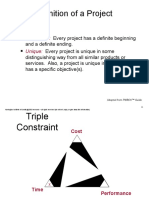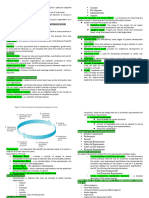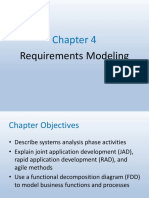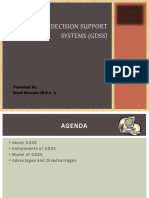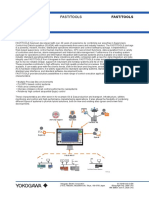Chapter 2
Key Terms
1- adaptive software development (ASD) — A software development approach used when requirements
cannot be clearly expressed early in the life cycle
2- agile — Quick and coordinated in movement; a method based on iterative and incremental development,
in which requirements and solutions evolve through collaboration
3- agile software development — A method for software development that uses new approaches, focusing
on close collaboration between programming teams and business experts
4- champion — A senior manager who acts as a key proponent for a project
5- deliverable — A product or service, such as a technical report, a training session, a piece of hardware,
or a segment of software code, produced or provided as part of a project
6- functional organizational structure — An organizational structure that groups people by functional
areas such as IT, manufacturing, engineering, and human resources
7- human resources (HR) frame — A frame that focuses on producing harmony between the needs of the
organization and the needs of people
8- IT governance — The authority and control for key IT activities in organizations, including IT
infrastructure, IT use, and project management
9- kill point — A management review that should occur after each project phase to determine if projects
should be continued, redirected, or terminated; also called a phase exit
10- matrix organizational structure — An organizational structure in which employees are assigned both
to functional and project managers
11- offshoring — Outsourcing from another country
12- organizational culture — A set of shared assumptions, values, and behaviors that characterize the
functioning of an organization
13- outsourcing — An organization’s acquisition of goods and services from an outside source
14- phase exit — A management review that should occur after each project phase to determine if projects
should be continued, redirected, or terminated; also called a kill point
15- political frame — A frame that addresses organizational and personal politics
16- politics — Competition between groups or individuals for power and leadership
17- predictive life cycle — A software development approach used when the scope of the project can be
articulated clearly and the schedule and cost can be predicted accurately
�18- project acquisition — The last two phases in a project (implementation and close-out) that focus on
delivering the actual work
19- project feasibility — The first two phases in a project (concept and development) that focus on
planning
20- project life cycle — A collection of project phases, such as concept, development, implementation, and
close-out
21- project organizational structure — An organizational structure that groups people by major projects
22- structural frame — A frame that deals with how the organization is structured (usually depicted in an
organizational chart) and focuses on different groups’ roles and responsibilities to meet the goals and
policies set by top management
23- symbolic frame — A frame that focuses on the symbols, meanings, and culture of an organization
24- systems — Sets of interacting components working within an environment to fulfill some purpose
25- systems analysis — A problem-solving approach that requires defining the scope of the system to be
studied, and then dividing it into component parts for identifying and evaluating its problems,
opportunities, constraints, and needs
26- systems approach — A holistic and analytical approach to solving complex problems that includes
using a systems philosophy, systems analysis, and systems management
27- systems development life cycle (SDLC) — A framework for describing the phases involved in
developing and maintaining information systems
28- systems management — Addressing the business, technological, and organizational issues associated
with creating, maintaining, and modifying a system
29- systems philosophy — An overall model for thinking about things as systems
30- systems thinking — A holistic view of an organization to effectively handle complex situations
31- virtual team — A group of people who work together despite time and space boundaries using
communication technologies




















